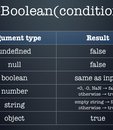Department
programming
programming
John Doe
May 22, 2023, 2:42 a.m.
John Doe
May 21, 2023, 10:37 p.m.
John Doe
May 21, 2023, 9:56 p.m.
John Doe
May 15, 2023, 8:23 p.m.
John Doe
May 9, 2023, 7:33 a.m.
John Doe
May 8, 2023, 9:51 p.m.
John Doe
May 4, 2023, 9:32 p.m.
John Doe
March 2, 2023, 6:55 a.m.
John Doe
Feb. 23, 2023, 8:36 p.m.
John Doe
Feb. 7, 2023, 11:44 p.m.
John Doe
Feb. 7, 2023, 9:33 a.m.




